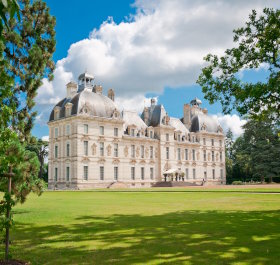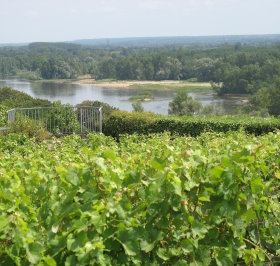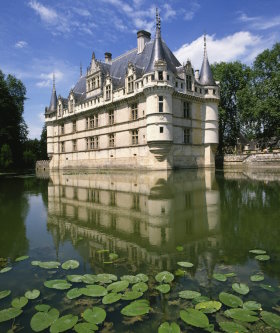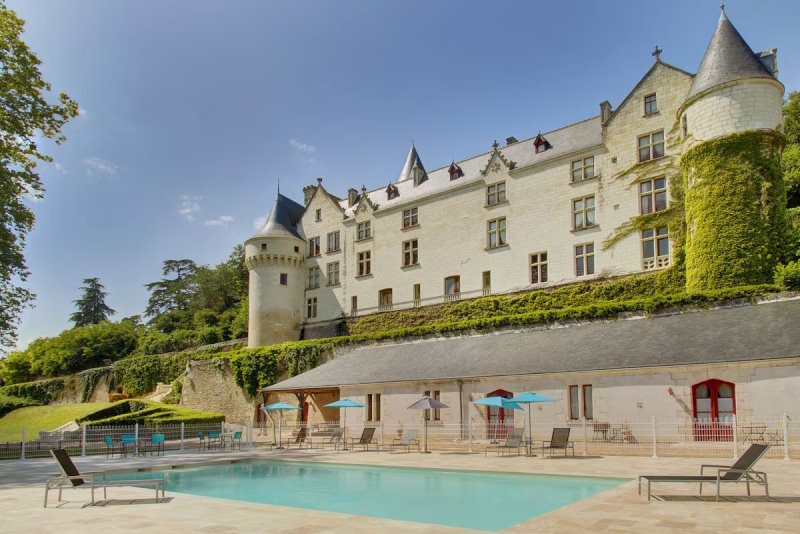Loire Valley day trip from Paris
Loire Valley day trips from Paris allow you to visit world famous renaissance châteaux. Set in Loire Valley, a World Heritage Site by UNESCO, theses royal Châteaux are also one hour from Paris by train, two hours by car. Visit France.
The Loire Valley Châteaux
The Loire valley combines lovely landscapes, the most beautiful renaissance Châteaux near Paris, great wines and restaurants. You have one day to spend in France. Go there. You have more days. Take your time, stay in a hotel, visit top Châteaux, enjoy French food and countryside. There is a superb cycling route called La Loire à vélo.

Chambord Castle is a heritage of King François I
Loire Valley day trip from Paris
It takes two hours from Paris to Loire Châteaux by A10. By train, Tours, the heart of Loire Valley, is one hour from Paris (buy tickets and rent a car).
If you have just one day, it will be easier to go on a day trip from Paris to Châteaux de la Loire with visits of Chambord, Cheverny and Chenonceaux. Air-conditionned bus. Service of a licenced guide. There are two-day and three-day options to combine Loire Castles with Normandy.

Cherverny is a 18th century Loire Castle
Half a day Loire Valley wine tour
In addition to beautiful castles and sceneries, the Loire Valley boasts some of the best white and red French wines. A local wine tour is therefore a must. Spend an afternoon discovering the Loire wines. Explore the Loire wine route.
Meet a characterful producer at a winery in Vouvray, one of the best-known appellations. Discover the estate and learn more about winemaking and wine tasting. Visit an underground troglodyte cellar dug out in the 10th century.

A Loire Valley wine tour in Vouvray is a must
One day Loire Valley wine and castle tour
Depart from Amboise or Tours and spend a day discovering the chateaux of the Loire Valley. The guided tour begins at the Château d'Azay-le-Rideau: you'll visit this magnificent site, famous for its reflection in the water. You'll then visit the gardens of Château de Villandry, remarkable for the harmony of its architecture. It is best known for its 3-level formal gardens.
The second part of the day is spent in Vouvray, where you'll meet a passionate winemaker on a wine estate. Throughout the afternoon, as you stroll through the vineyards, you'll learn more about this grape variety, winemaking and tasting. You'll become an expert on Loire wines.

The Azay-le-Rideau chateau is marvelous
Stay in top Loire Valley château with outdoor pool

Château de Chambord
Built in a rather desolate plain and surrounded by hunting forests, Château de Chambord is a prestigious château, that was hardly ever inhabited. Commissioned by King François Ier in 1519, it was in construction until the death of the king to end only under King Henri II. François Ier was at first impatient, but lost interest rather quickly. Towards the end of the reign, he came very little to Chambord. Perhaps he found the castle old-fashioned. The principal masons engaged for the realization of the Château are Jacques Sourdeau, one of the builders of Blois, Pierre Trinqueau, who seems to have preserved until his death, in 1538, the direction of the work, and Jacques Coqueau. Several drawings of the building were established before the start of construction. A wooden model was executed by Dominique de Cortone and it is thought that Leonardo da Vinci, during the last years of his life spent in the Loire Valley, intervened in the development of Chambord's plans. Chambord is the most famous Château de la Loire.
Chambord 41250 France

Chambord is the most famous Loire Castle
Château de Chambord history
François I was only twenty when he was crowned King of France on January 25, 1515. Very quickly, he became a powerful king, thanks to his victory of Marignan in Italy in September of the same year. In 1516, he decided to build a castle to his glory. Francois I grew up near Amboise in the Loire Valley and decided to build the castle in the region. Chambord in the heart of a forest satisfied his passion for hunting.
The construction of Chambord began in 1519 and was finished only in 1685, under Sun King, Francois I did not see his castle completed but he himself claimed that "if we were concerned about the completion of things, we will never undertake anything." Francois I was very involved in the construction of Chambord, but he stayed there only a few dozen days in his reign. The King lived in Fontainebleau, which was at the time two days’ journey from Chambord.

Château de Chambord architecture
François I wanted a castle with French and Italian influences. In Chambord, we find the architecture of the castles of the Middle Ages: a central square building with a dungeon and four massive corner towers. Inside, the castle is unique and responds to a fascinating geometry in the shape of a Greek cross, like many Italian churches of the time. At the heart of Chambord is the famous double-revolution staircase, consisting of two stairs that never cross, although turning in the same direction. With no less than 426 rooms, 77 staircases and 282 fireplaces, the Castle is monumental. Beyond its architecture, Chambord surprises with its decorations. In particular on the second floor with the 80 caissons carved with the symbols of the King: the monogram "F" of Francois I; his emblem, the Salamander.
At the top of the castle, Chambord gives its visitor a last surprise: a large terrace running around the castle, with a view on the many chimneys and the gardens. The archives of Chambord having almost all disappeared, many questions exist on the identity of its architect. It could be the work of Leonardo da Vinci, invited to France by Francois I in 1516. Da Vinci died in Amboise in 1519, a few months before the start of the construction of Chambord. Many of the innovations used in Chambord, such as the double-revolution staircase, the double-pit latrine, the ventilation ducts are included in the Master’s notebooks. It is therefore likely that he intervened in the design of the castle.

The top Loire Valley Castles
The Loire Valley counts around 3000 Châteaux, most of them interesting. The seven most beautiful Châteaux are:
Amboise, a royal castle with Da Vinci grave
Azay le Rideau, an intimate castle surrounded by a pond
Blois, where France history was made
Chambord, the most prestigious castle
Chenonceaux, a bridge over the Cher river
Cheverny built in 18th century
Villandry and its beautiful gardens

The Loire is the last wild river in Europe
History of Loire Valley Castles
In the 16th century, French kings Charles VIII, Louis XII and François I fought and for a short time ruled in Northern Italy.
They were greatly influenced by the Italian arts. Coming back to France, they revived French architecture, abandoning the fortresses of the past. This is called the Renaissance.
French kings and nobility also relocated to the Loire Valley, its climate and peace, where they build magnificent castles.
Shortly after his Italian patron died in 1516, Leonardo da Vinci, the painter of Mona Lisa, was enticed here by the arts loving François I, with the promise of a pension and comfortable residence. His and other Italian influences have left their mark in the form of the Châteaux and gardens of the Loire Valley. All their energies were not however devoted to the pursuit of the arts and as many of the Châteaux stories and legends will testify, they set aside much time for seductions and rendez-vous of an amorous nature.

Azay le Rideau is a renaissance castle

